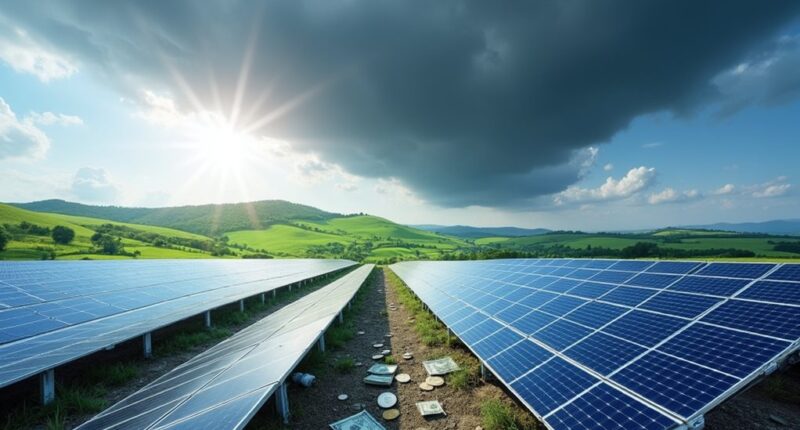The U.S. solar market is in a whirlwind, facing staggering tariffs up to 3,521% on imports from Southeast Asia. This situation arises from allegations that manufacturers in Cambodia, Malaysia, Thailand, and Vietnam sell solar products at unfairly low prices. As imports tumble, the market is left reeling, with domestic manufacturers cheering but project developers sweating over increased costs. It’s a curious twist in the energy game, and the implications are just warming up. Stay tuned for more!
U.S. Solar Imports Face Massive Tariff Hikes
As the sun rises on the U.S. solar import scene, a storm brews over Southeast Asian suppliers, where hefty new tariffs are set to reshape the landscape of renewable energy. The U.S. Department of Commerce has announced staggering anti-dumping and countervailing duty rates that could reach as high as 3,521% for some Cambodian companies. Yes, you read that right—over three thousand percent! That’s like charging a hundred bucks for a slice of pizza because someone suspected the chef was cutting costs.
The investigation began in April 2024, thanks to a petition from the American Alliance for Solar Manufacturing Trade Committee, alleging that manufacturers in Cambodia, Malaysia, Thailand, and Vietnam were benefiting from unfair subsidies and selling their products below production costs. This move aims to protect U.S. solar manufacturers like Hanwha Q Cells and First Solar from what the government calls “unfair competition.” It’s a classic case of “keep it local” gone turbocharged. Notably, Cambodia’s solar exports have plunged nearly 60% following the tariff announcements, illustrating the immediate impact of these measures. Despite these challenges, the long-term environmental benefits of solar energy remain substantial compared to traditional fossil fuels.
For the record, the tariffs vary drastically. Vietnam faces a countrywide rate of up to 395.9%, while Malaysia’s rate sits at a comparatively modest 34.4%. One can only imagine the panic among importers as they scramble to post cash deposits based on these staggering rates. Countervailing duties for Cambodia and Malaysia are set to apply starting on October 4, 2024, adding more urgency to the situation. Import volumes from these countries, which accounted for about 77% of U.S. solar module imports in 2024, are likely to plummet, resulting in significant market uncertainty.
While this is seen as a win for domestic manufacturers, it could spell trouble for U.S. solar developers reliant on cheaper imports. The new tariffs could slow down solar deployment, pushing developers back toward fossil fuels—something they were hoping to escape. It’s almost like trying to diet but suddenly finding yourself at an all-you-can-eat buffet of carbon emissions. The implications are vast and complex, and as the dust settles, the U.S. solar market braced itself for a turbulent ride ahead.









